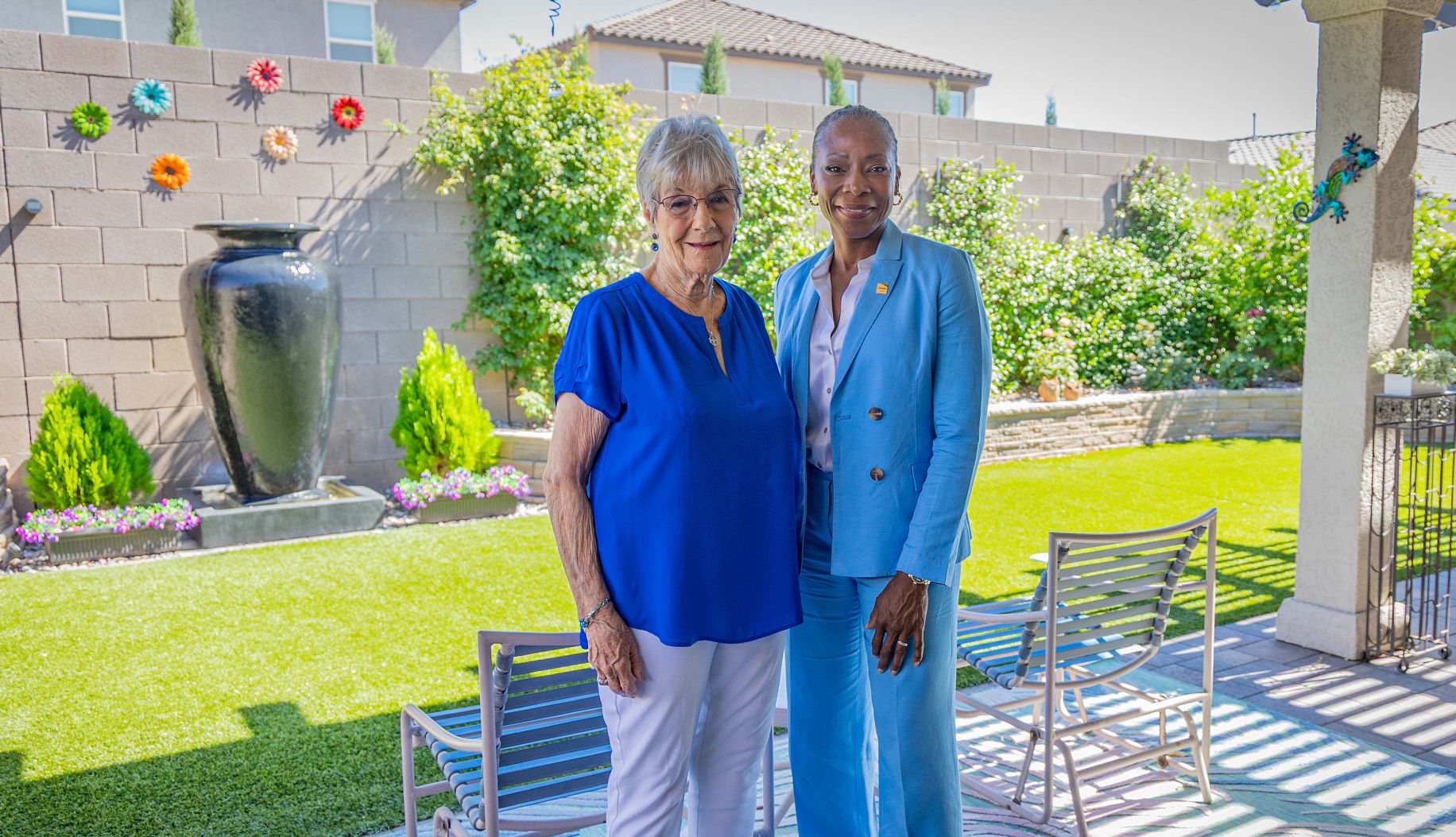AARP Hearing Center
At 87 , Marylyn Jones likes to point out, she and the Golden Gate Bridge are the same age — “although she’s had a lot more paint than I have.”
That makes them both younger than Social Security, which turns 90 in August. For most of her lifetime, and most of Social Security’s, Jones paid into the federal retirement program, even since taking her first job at age 16 in a Marin County, California, ice cream shop.
The monthly payments she gets in return allow the former banker and real estate agent to live independently in a three-bedroom house in Las Vegas, where she recently welcomed AARP’s chief executive officer, Dr. Myechia Minter-Jordan, to talk about what Social Security has meant to her.
“Social Security is a lifeline,” Jones told Minter-Jordan as they sat together in her living room. Without it, “I’d have to get a job, but who’s going to hire an 87-year-old woman?”
A February 2025 AARP survey found that 88 percent of Americans over 50 say Social Security is important for a financially secure retirement, and 86 percent worry that the program will not be able to provide the same level of benefits in the future as it does today.
Join Our Fight to Protect Social Security
You’ve worked hard and paid into Social Security with every paycheck. Here’s what you can do to help keep Social Security strong:
- Add your name and pledge to protect Social Security.
- Find out how AARP is fighting to keep Social Security strong.
- Get expert advice on Social Security benefits and answers to common questions.
- AARP is your fierce defender on the issues that matter to people 50-plus. Become a member or renew your membership today.
Jones shares that worry, and she wants Congress to act now to secure Social Security’s future. She frequently calls and writes her representatives, asking, “How can you sit up there and proclaim you represent your constituency?”
No expectations
Until five years ago, Jones was hosting open houses and driving clients around to viewings as a real estate agent in San Bernardino County, California. During the pandemic, she moved three hours east to Vegas to be near one of her three daughters. Redoing her real estate license in a new state and building up a list of clients all over again wasn’t something Jones wanted to do. “As you get older, you don’t have the same energy,” she says.
Now, instead of negotiating sale prices, Jones spends her days gardening, painting and watching football or baseball games, depending on the season (she roots for the Raiders, Dodgers and A’s). She volunteers through her local Kiwanis Club, mentoring high school students and taking communion from her church into retirement homes. “It keeps me out of the bars and off the Strip,” she jokes.
It’s a retirement Jones didn’t expect to enjoy. When she claimed Social Security at 65, she saw the monthly payment as something that would “only supplement my income, not replace it.” Jones expected she’d need to keep working as long as she could.
It was her niece, Pam Monroe, who, concerned about Jones’ finances, suggested in 2017 that she look into whether she could collect survivor benefits on the work record of her second husband, Merritt Sedgwick, a quality control manager for a defense contractor who had died six months earlier.





































































More From AARP
Nine Digits That Changed America’s Identity
How the Social Security number became the bulwark of our financial lives
5 Ways AARP Is Fighting for Social Security
AARP is pushing for improved customer service
Are You Afraid of Going Broke in Retirement?
These 8 tips can help you make your money last